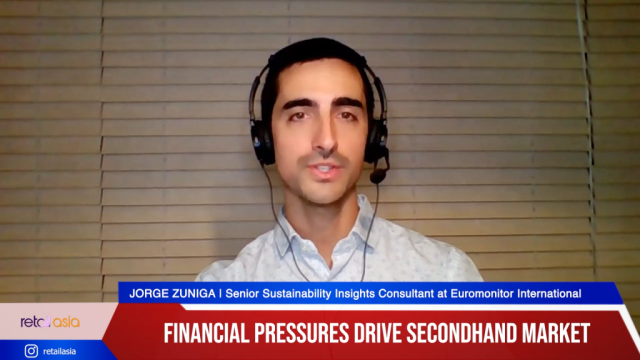 /Herbert Yum
/Herbert Yum
BNPL regulations toughen debt prevention and financial literacy in APAC
The Philippines, Vietnam, and Indonesia are more vulnerable to the risks of credit products, Euromonitor International reported.
As the buy now, pay later (BNPL) payment scheme is growing in popularity in the Asia Pacific markets, regulators are working to prevent accrued debts and educate consumers on how to manage their finances, Euromonitor International said. It urged underbanked populations, such as the Philippines, Vietnam, and Indonesia, to work closely with those in more experienced markets like Singapore and Australia, to strike the balance between allowing companies to operate whilst also keeping consumer debt at a manageable level.
Herbert Yum, Euromonitor International’s research manager in APAC, said the regulations revolve around “the risk of putting consumers overly in debt when using BNPL products are well under control, consumers having a good understanding of contractual terms of BNPL products, and the ability for BNPL providers to conduct a thorough assessment of consumers’ creditworthiness.”
Yum said markets can better manage their financial health after having been exposed to credit products earlier than others in the region.
In Hong Kong, for instance, some consumers try not to use credit cards to ensure that they are not heavily hurt by debt because of the misuse of those consumer credit products.
“In Hong Kong and Singapore, consumers are relatively knowledgeable and educated in terms of the risks and the value associated with the consumer credit product,” said Yum in an interview with Retail Asia.
But the Philippines, Vietnam, and Indonesia have low exposure to financial technology services, said Yum. A Euromonitor, Bain & Company, Temasek, and Google joint study showed that most underbanked populations are in Vietnam (79%), the Philippines (78%), and Indonesia (77%).
Euromonitor’s Consumer Finance data showed that the transaction size of BNPL is still low in the APAC region against other payment methods such as credit and cash payment despite BNPL’s growth seen over the past year. Yum said this is because the payment platform is still in the early stages of development.
Hong Kong’s BNPL accounts for 0.3% of the other personal loans market. BNPL penetration of other personal loan markets is 1.9% in Indonesia, 0.5% in Malaysia, 6.8% in the Philippines, and 3% in Singapore, respectively, in 2022.
Best practices
Australia started requiring members of the Australian Finance Industry Association to impose limits on how much can be paid in late fees. One of the BNPL platforms in Australia is Afterpay, founded in Sydney in 2014.
The BNPL providers must also think of an internal dispute resolution process to ensure customers can be assisted when they have difficulty repaying the instalments, Yum said.
Despite being the early adopter of BNPL solutions in the region, its government is still considering feedback on the future regulatory framework for BNPL products due to the gaps in BNPL regulation under Australia’s laws.
“However, since BNPL products fall under the exemptions available to certain types of credit in Schedule 1 of the Credit Act or the National Credit Code, it is not properly regulated in Australia,” said Yum.
According to Australia’s treasury government, the exemptions create “potential for consumer harm due to the absence of key protections” such as responsible lending standards or other requirements of the Credit Act.
In Singapore, a US financial technology firm, FIS, reported that the BNPL market is expected to grow at a compound annual growth rate of 40% through 2025. This makes it the fastest-growing online payment method in Lion City.
As this happened, the Singapore FinTech Association put up a BNPL Working Group and created a code of conduct for BNPL providers that was launched in October 2022.
Yum said the BNPL providers will self-regulate to help consumers spend their money wisely. To do so, a cap of US$2,000 was imposed. BNPL providers should also suspend a customer’s access to its services if the consumer fails to comply with payment obligations.
“Both the Australian and Singaporean governments have their next step to further impose industry guidelines and potential to ensure BNPL users are well educated with the BNPL solutions, and to reduce the risk of being overly in debt by improving the BNPL providers’ ability to access consumers’ creditworthiness,” said Yum.
For Hong Kong’s central bank, it enforced seven consumer protection measures on BNPL products, which seek to educate consumers to have a clear understanding of the contractual terms of BNPL products.
“To ensure BNPL products are well regulated or monitored in HK, it is essential for such measures to be imposed on both bank and non-bank product and services providers,” said Yum.
He also advised BNPL providers or regulators to impose measures to educate consumers on using the platform and better manage to spend their money. One such way is Hong Kong’s encouraging marketing campaign for BNPL providers.
“[BNPL providers] must include a message such as, if you cannot repay, don't borrow money. Consumers need to be aware of the risks. This kind of message is not necessarily the most useful but it's a must,” Yum added.
Malaysia has yet to impose specific regulations on BNPL providers. They intend to roll out a consumer credit act that will cover BNPL platforms, Yum said.
Building confidence
Yum said regulations will increase customer confidence in BNPL and there will be a “healthy growth of BNPL transactions.”
“In other words, this would increase both customer conversion and retention in the long run,” said Yum.
Specifically, in Singapore, Anton Ruddenklau, partner and head of financial services in KPMG, consumer trust will be raised knowing that their BNPL provider is following the measures that are meant to guide them in spending and avoid accruing debts.
“Strangely enough, it gives you comfort when you're dealing with an industry that has got some rules,” said Ruddenklau in an interview with Retail Asia.
BNPL expected to grow
With the high inflation and interest rate in APAC markets, Yum sees that these could affect consumer spending and increase consumer demand for consumer credit products, which include BNPL products.
Analytics firm, GlobalData, said India posted a consumer price inflation of 6%, which it said was the highest inflation rate in the APAC region in 2022. On the back of the tightening global financial situation and the Ukraine-Russian war, the average consumer price in APAC was 3.6%, excluding Argentina.
Yum said this is because consumers will likely need liquidity whilst macroeconomic uncertainties continue.
“It is likely for consumers to spend less on luxury goods, or to trade down when making purchasing decisions,” said Yum.
When this occurs, Yum said, consumers will likely be lured by BNPL applications, to ease the stress of cash flow, especially for shoppers who are rejected by banks.
Using BNPL platforms slowly shifted from less pricey items, such as food deliveries and fashion accessories, to moderately expensive and expensive items, including electronics and appliance items, Yum pointed out.
“The rationale behind such tendency in moving towards more expensive items is the need for consumers to pay the full payment of the purchase in multiple instalments is higher for expensive items due to the liquidity constraints,” he also explained.





















 Advertise
Advertise








